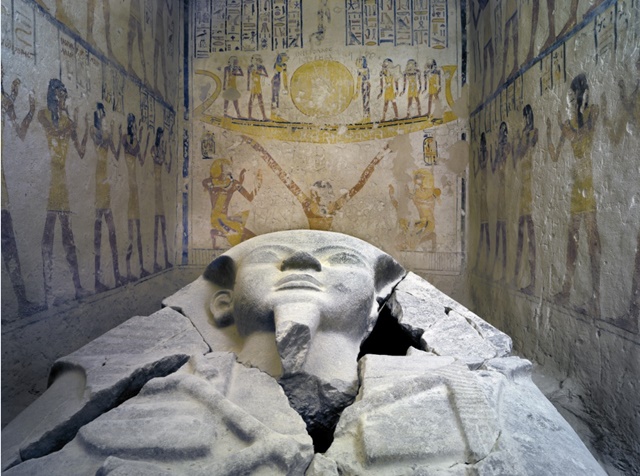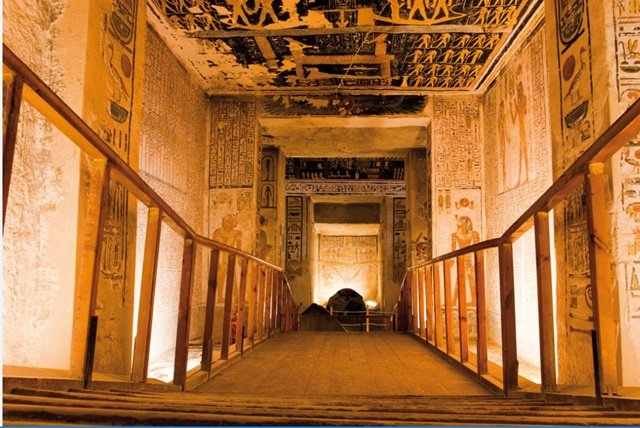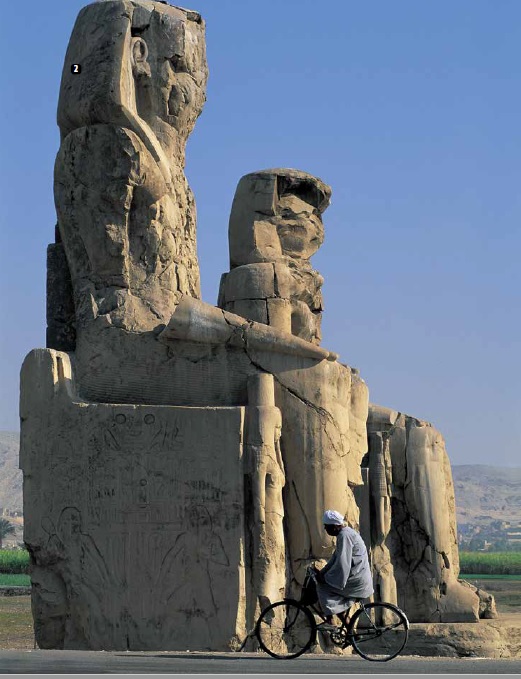The Valley of the Kings - the Pharaons Cemetery

This burial complex in Egypt is located near Luxor , 600 km south of Cairo along the Nile River.
The tombs discovered to date in the necropolis of the Valley of the Kings are the great will of the Pharaohs who ruled Egypt during the New Kingdom.
The key name is Tutankhamun. After 1922 Howard Carter discovered the tomb of this young pharaoh, the necropolis of the Kings Valley, in which it was found, gains prominence and becomes the focus of the attention of archaeologists and researchers of the history of Ancient Egypt . Currently, this desert region, located 600 km south of Cairo on the west bank of the Nile, covers 63 tombs. Half of them belong to the pharaohs of the New Kingdom, who chose this place as their royal cemetery.
The place is not chosen by accident. Against him, on the other bank of the Nile, was Theva, the glittering capital of the New Kingdom. At that time, the city replaced the former center of power Memphis, the capital of the Old Kingdom and home to the monumental pyramids. Unlike their predecessors, the pharaohs who ruled between 1570 and 1085 BC chose to move their tombs away from burial temples to reduce the risk of looting. Today, these majestic temples dedicated to each Pharaoh can be seen on the green, urbanized banks of the river. The Valley of the Kings where the pharaohs are buried is located 5 km west of the river, in a desolate rocky area.
Underground treasure
The seemingly plain, cane-covered surface hides really exciting underground secrets. Rope of rocks preserves the riches of the tombs of Pharaohs and nobles; the rulers of the New Kingdom have replaced the magnificence of the pyramids in which their ancestors were buried, with the quiet and hidden luxury of the underground burial complexes. All the tombs have a similar plan: a spacious entrance leading to a shaft, an anteroom with columns and a room with pillars or royal chambers, where the pharaoh was laid in a sarcophagus for eternal peace.
The necropolis is divided into two parts - the eastern valley and the western valley. In the western valley there are only four tombs - two belonging to Amenhotep III (1390-1352 BC) and Ay (1327-1323 BC) inherited Tutankhamun, and two more, which are unidentified. There are 59 tombs in the east valley.
The oldest, found in 1899, is Tutmos I, who ruled between 1525 and 1512 BC. The last pharaoh, buried in the necropolis, was Ramses XI, the last king of the 20th Dynasty who ruled between 1099 and 1069 BC. According to archaeologists, the best designed tomb is that of Seti I. It was here that, after its discovery in 1817, the Litany of Re. This funeral text was reserved only for the nobles and called the sun god as an advocate for the deceased. From Ramesses IV (1153-1147 BC), the tombstones were decorated with images of the Book of the Dead that reproduced the legend of the relationship between the Sun and the Heavenly bodies.

The discovery of the tomb of Tutankhamun, one of the three in the valley that remained untouched, is a turning point as it offers access to the four rooms in the gallery in their original form as they were left after the entrance to the tomb. There were also decorations, objects, clothes, the sarcophagus with body and treasure - all in their original shine. The discovery was unique. But in 2005, 83 years after Carter found it, just when it was thought that no other funerals would be found, a group of archaeologists entered a previously untouched gallery of seven sealed sarcophagi.
The tomb is called KV63 (the initials are the abbreviation of the English name of the Valley of the Kings, and the number corresponds to the sequencing of the tomb).

Techniques to keep the bodies
In the tomb were found materials used to preserve the bodies, dozens of garlands of braided flowers and other religious artifacts. Resin-coated molds were found in the shape of the faces of their occupants, but the sarcophagi were empty. The subsequent studies not only provide information about the natural substances used in the process of embalming and tissue processing but also give rise to the suspicion that the Tutankhamen's mother was also buried in the tomb. This is one of the mysteries of the ancient necropolis, which remains unrecognized, and there is one more: KV5, a tomb that is still being cleared, may be the largest in the valley. The latest research shows that there are buried many of the 150 children whose father is considered Ramses II.
(The pictures and the text are from the book "The Great Wonders of the World" by Knigomania. )